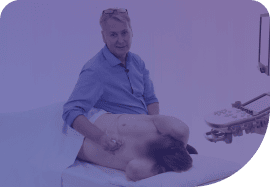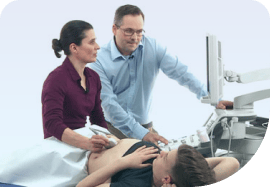
Become a detective with our echocardiography courses!
Do you know how to find the clues to detect pathologies, diseases, and more? With every Bachelor or MasterClass, get 2 months of free AI SonoAssistant access.
Find out if you are an ultrasound detective!
Can you detect the clues?
Can you help this patient?
If you are looking for our previous quiz questions and their answers, click here!
Final Call! Valid on all our ultrasound courses until October 20th:
Answers to our Ultrasound Quizzes!

Become an MSK ultrasound detective!
From basics to advanced and specialised musculoskeletal ultrasound, learn to detect the clues with us! Swipe to see more courses!

Find the clues in emergencies and point-of-care situations!
Be prepared for emergencies at all times by knowing where to find the clues to detect potential life-threatening pathologies and save critical time!
Why our users love us

Ahmed Benzoghli

Wasseem Rock

Kati Tonninger, Austria
"I was recommended 123sonography through a friend and became a fan. The quality of the images and films are amazing."

Steven Feldstein, USA
"The e-learning platform is quite simple to navigate through, and the quality of the videos and images is quite good."

Satish Govind, India
"The communication style is simple, uncomplicated, but extremely effective in the way various topics are covered and discussed."
00
Days
00
Hours
00
Minutes
00
Seconds
Become an ultrasound detective yourself!
This offer expires for good on October 20th, 2024.
Previous detective questions!
Look at these loops and answer our first question!
Ready for the next question on abdominal ultrasound?
Look at this ultrasound image of an obese male patient with fatigue, muscle weakness and hypertension.
Can you answer this next question?
Look at these loops and answer our next question!
Check out this next case!
You are doing a carotid ultrasound exam on a 40-year-old female with a headache and joint pain. She does not have cardiovascular risk factors.
Can you see the clues in emergencies?
The ambulance is called to a patient with chest pain. Can you solve this critical case?
Next quiz on Thyroid Ultrasound!
In this case, you see a follow up study of a patient with thyroid hormone replacement therapy.
Can you get this next question right?
A 67-year-old female with left shoulder pain and stiffness for 4 months, unresponsive to exercise, was diagnosed with moderate glenohumeral osteoarthritis based on an X-ray. She agreed to an ultrasound-guided cortisone injection. The ultrasound revealed mild bicep tendon sheath effusion with the rotator cuff intact.
Another emergency is waiting for you!
A 55-year-old man was found unconscious at home, with a fever of 38.5°C and low blood pressure. His CT scan showed a stroke. A TTE was performed. Additionally, a transesophageal echocardiogram (TEE) was done.
Here is your next emergency question!
Can you detect the clues fast when necessary? Here we have a patient with a hypertensive emergency!
Can you see the clues?
Look at this patient after aortic valve surgery and answer our quiz!
Here is another echo question for you!
Can you solve this case?

Do you know this answer?
Can you solve this OB/GYN case?
Can you solve this problem?
Can you see the differences?
Look closely on this one!

































